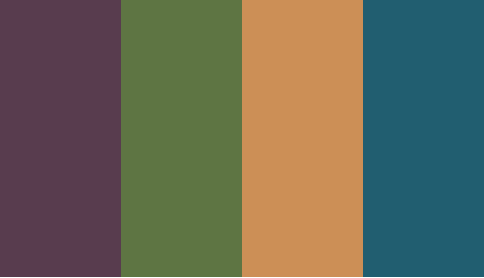









Mad About Molds
Tips for making Cameos
Question:
I would like to start making some cameos. I can
never get mine to look nearly as good as others
I’ve seen. Is there a trick that I'm missing? I can
never get mine to have a nice edge between the
white and the background.
Answer:
1.
You will need at least two colors of polymer
clay: usually ivory for the cameo part and a
darker color for the background. If you would
like a marbleized or shaded background, mix
some ivory canes or balls into the darker color
clay.
2.
Be sure the clay is well conditioned. Most
molds don’t require a release agent, but if you
find the clay sticking to the mold, try spraying with water or dusting with corn starch.
3.
Take a small ball of ivory clay (better too little than not enough) and press it into the cameo
portion of the mold.
4.
Use the handle of a paint brush or a chisel headed clay shaper to tamp the clay down.
5.
Work slowly and meticulously so as to capture all the detail of the cameo. It is OK, even
preferable to leave some convexity to the ivory clay.
6.
Leaving sections of the ivory very thin (for example, the folds of a woman’s dress) will create
a beautiful translucent filmy look.
7.
The most important step on the cameo level is to smooth the edge of the design so that
when the darker clay base is added to the mold, you achieve the nice sharp edge you are
seeking between the cameo and the dark background.
8.
Roll out a small piece of the background clay to the proper thickness for your mold.
9.
Gently press the mold on top of it to mark the shape for cutting.
10.
Cut the background and lay it into the mold.
11.
Tamp around the edge and work gently toward the center, applying less pressure when you
are over the cameo portion to avoid causing the ivory clay to ooze out of the depressed area
of the mold.
12.
If the clay is not level, gently add more background color to top it off.
13.
Use the paintbrush handle or clay shaper to level and smooth the back.
14.
Bake as usual.
To achieve an antique look, apply a whitewash to your cameo after baking. Brush on white acrylic
paint thinned with water. Then wipe off the excess. Using white on a light color clay gives very
subtle shadings and depth.
Various cameo techniques to experiment with.
•
It would be fun to marbleize colored clay for an elegant background look.
•
As far as the silhouette goes, it could be painted first with a white primer, and then topped
with a pearl or translucent paint for special effects.
•
Another idea would be to fill the mold in the silhouette areas with white clay and then the
background with colored clay. Then when it's baked you could use white transparent pearl
paint to finish off the details of the hair, leaves etc....
•
Another idea that would be fun, would be to just make the whole cameo with white clay, and
then use a fine tip paint pen for better details to color in the background and then use an
antiquing effect over the top of entire casting. That would be beautiful.
•
Sue Espy’s website also has some great cameo information.
If you would like to send a picture of your finished work, we would be happy to feature it on our
site.
You can view pictures of handmade cameos that were made by some of our very talented
customers on our gallery page HERE. It’s worth a look!

Cameos & Molds




- Home
- About us
- Art clay projects pmc
- Basic instructions
- Cameos and molds
- Contact us
- Castings materials and instructions
- Casting recipes
- Chat
- Custom molds
- Creative ways to use molds
- Flexible mold instructions
- Gallery to inspire
- Payment and shipping
- Safety precautions
- Search and site map
- Testimonials
- Troubleshooting
- Video
Mad About Molds
Tips for making Cameos
Question:
I would like to start making some cameos. I can never get mine
to look nearly as good as others I’ve seen. Is there a trick that
I'm missing? I can never get mine to have a nice edge between
the white and the background.
Answer:
1.
You will need at least two colors of polymer clay: usually
ivory for the cameo part and a darker color for the
background. If you would like a marbleized or shaded
background, mix some ivory canes or balls into the darker
color clay.
2.
Be sure the clay is well conditioned. Most molds don’t
require a release agent, but if you find the clay sticking to
the mold, try spraying with water or dusting with corn
starch.
3.
Take a small ball of ivory clay (better too little than not
enough) and press it into the cameo portion of the mold.
4.
Use the handle of a paint brush or a chisel headed clay
shaper to tamp the clay down.
5.
Work slowly and meticulously so as to capture all the detail
of the cameo. It is OK, even preferable to leave some
convexity to the ivory clay.
6.
Leaving sections of the ivory very thin (for example, the
folds of a woman’s dress) will create a beautiful translucent
filmy look.
7.
The most important step on the cameo level is to smooth
the edge of the design so that when the darker clay base is
added to the mold, you achieve the nice sharp edge you
are seeking between the cameo and the dark background.
8.
Roll out a small piece of the background clay to the proper
thickness for your mold.
9.
Gently press the mold on top of it to mark the shape for
cutting.
10.
Cut the background and lay it into the mold.
11.
Tamp around the edge and work gently toward the center,
applying less pressure when you are over the cameo
portion to avoid causing the ivory clay to ooze out of the
depressed area of the mold.
12.
If the clay is not level, gently add more background color to
top it off.
13.
Use the paintbrush handle or clay shaper to level and
smooth the back.
14.
Bake as usual.
To achieve an antique look, apply a whitewash to your cameo
after baking. Brush on white acrylic paint thinned with water.
Then wipe off the excess. Using white on a light color clay gives
very subtle shadings and depth.
Various cameo techniques to experiment with.
•
It would be fun to marbleize colored clay for an elegant
background look.
•
As far as the silhouette goes, it could be painted first with a
white primer, and then topped with a pearl or translucent
paint for special effects.
•
Another idea would be to fill the mold in the silhouette
areas with white clay and then the background with colored
clay. Then when it's baked you could use white transparent
pearl paint to finish off the details of the hair, leaves etc....
•
Another idea that would be fun, would be to just make the
whole cameo with white clay, and then use a fine tip paint
pen for better details to color in the background and then
use an antiquing effect over the top of entire casting. That
would be beautiful.
•
Sue Espy’s website also has some great cameo
information.
If you would like to send a picture of your finished work, we
would be happy to feature it on our site.
You can view pictures of handmade cameos that were made by
some of our very talented customers on our gallery page HERE.
It’s worth a look!

Cameos & Molds








